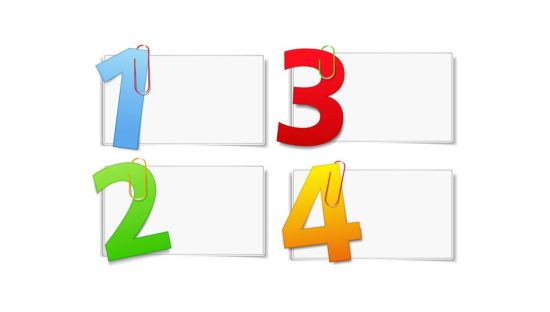- Children will develop the concept of inclusion, that larger numbers “include” smaller numbers.
- Students will determine which of two numbers is larger, then place both numbers in a paper pocket labeled with the larger number.
- After playing the game, students will discuss what they notice about the numbers inside the different pockets, ultimately seeing that each pocket number contains all the smaller numbers within.
Task Instructions
- Arrange the numbered paper pockets in numerical order
- Deal all of the cards so that each student has the same number. Students keep the cards in a pile, face down.
- Students say, “One, two, three, flip!” and when they say “flip,” each player turns over the top card in his or her pile.
- The students decide which number is larger, then they place both cards in the pocket labeled with the bigger card’s number. For example, if students turn over a 4 and a 5, they read those numbers and put both cards into the pocket labeled 5. If the numbers are the same, both cards go into that numbered pocket.
- Players continue until all the cards are in the pockets.
- After the game, ask students to predict which numbers they will find in the paper pocket labeled three and why they think that.
- Encourage students to examine the paper pockets one by one and talk about what they notice (and see if their predictions were right). Students should talk about why those numbers were inside each pocket and why other numbers were not.
- After the students have played the game many times over many weeks, facilitate a discussion about why the pockets look the way they do at the end of a game. For example, show students a pocket labeled 2 and ask them which numbers they think will be inside. Write down their predictions, then examine the pocket and discuss why there are only ones and twos in the pocket. Then ask students why they think some numbers are NOT in the pocket.
- Later in the year, have students play the game again, but when they finish the game they will figure out which paper pocket has the most cards in it. This will be the pocket that “wins.” Make a tally on a class chart to record which pocket had the most cards. Discuss with the class why the higher numbers “win.”
Materials
- Set of 1-10 Number Cards
- Set of 10 paper pockets with a number card from 1-10 taped on the front of each pocket (library-card pockets work well, or you can cut small envelopes and tape the sides)
Reference
Confer, C. (2005). The Pocket Game. In Teaching Number Sense, Kindergarten. Sausalito, CA: Math Solutions Publications.

